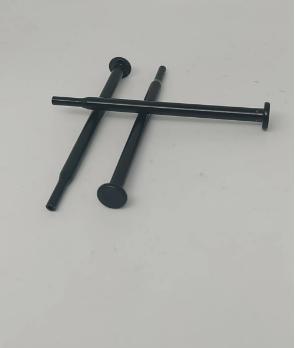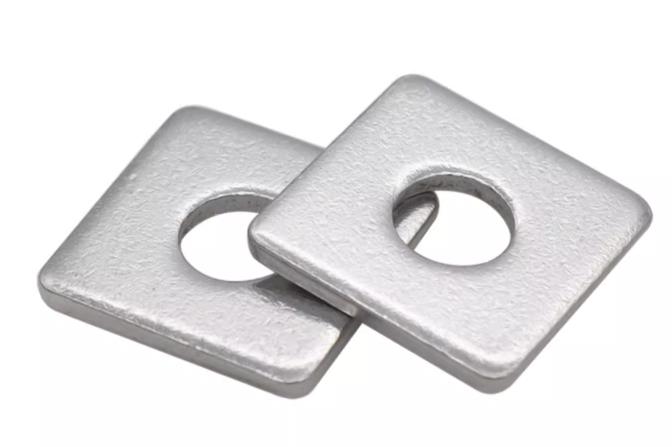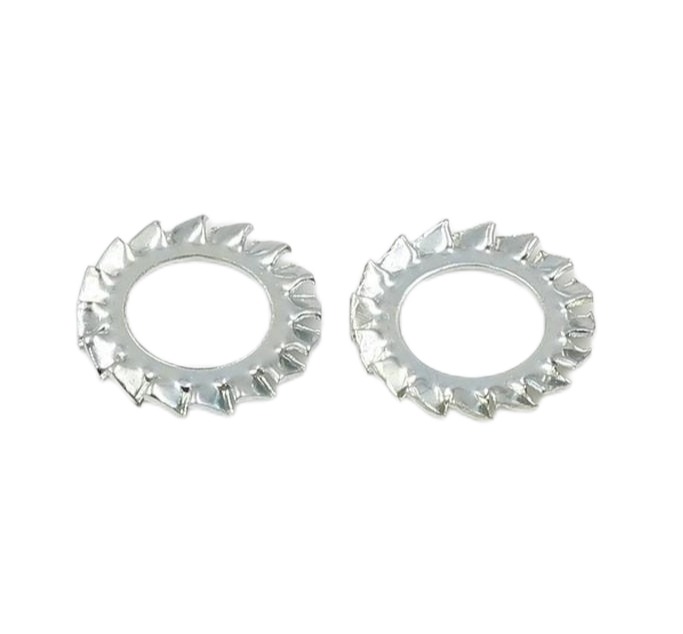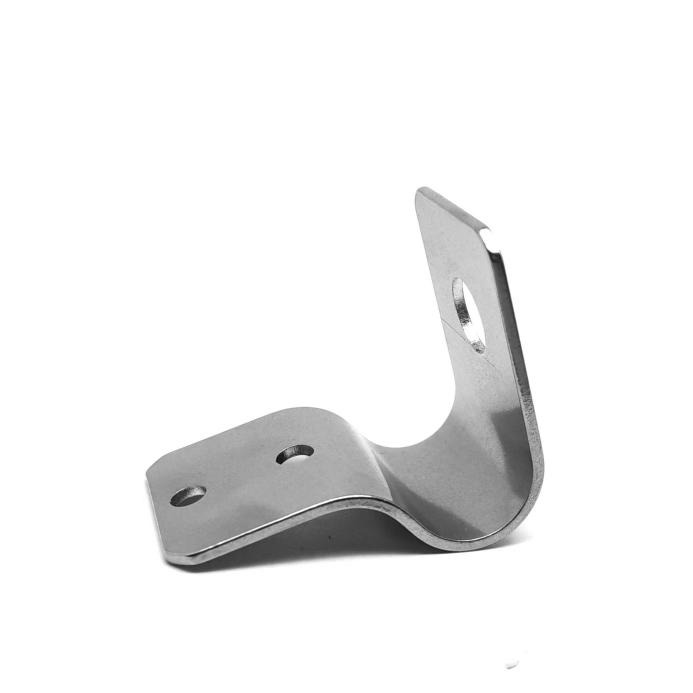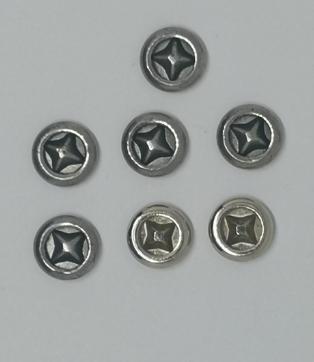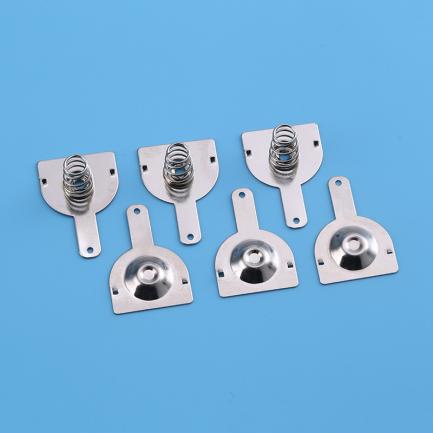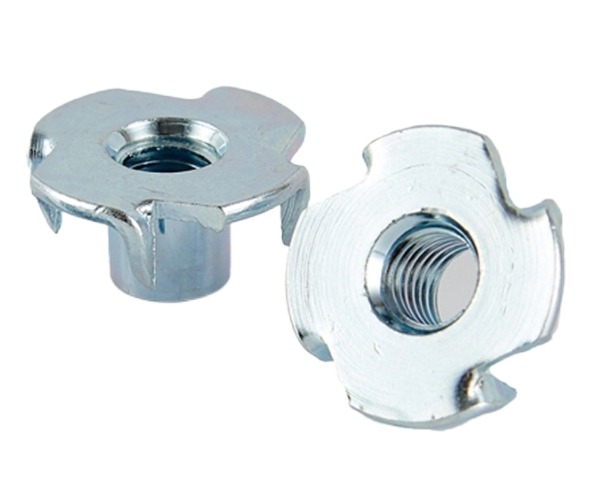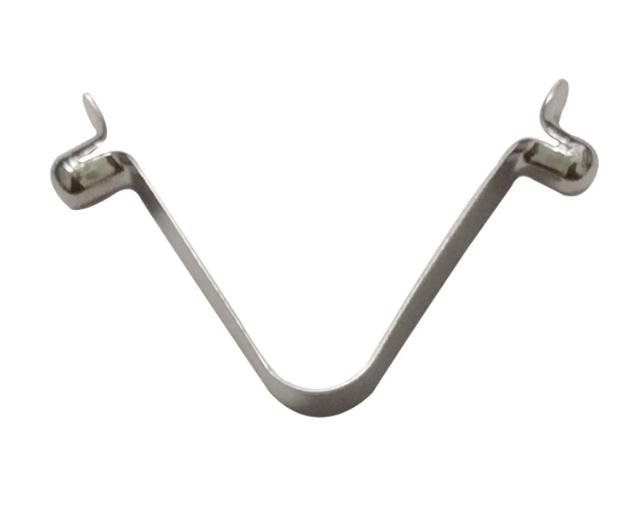Aluminum Stamping: Essential Precautions for a Safe and Efficient Process
Aluminum, lauded for its lightweight strength and versatility, finds extensive use in various industries. However, its unique properties necessitate specific precautions during the stamping process to ensure part quality, operator safety, and environmental compliance. This article delves into the critical precautions across various stages of aluminum stamping, equipping you with valuable insights to navigate this process effectively.
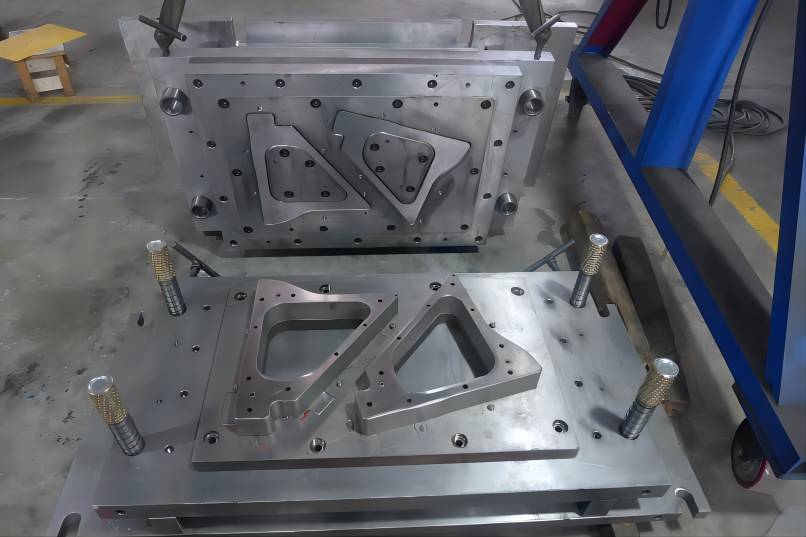
Material Considerations: Choosing the Right Aluminum and Handling it with Care
Selecting the right aluminum alloy for your stamping project is crucial for achieving the desired aluminum stamping part quality and process efficiency. Here are some key factors to consider:
1. Desired Properties
- Strength: Different alloys offer varying levels of tensile strength, yield strength, and fatigue strength. Choose an alloy with sufficient strength to withstand the intended loads and stresses in your application.
- Ductility: Ductility refers to the material’s ability to deform without breaking. Higher ductility allows for more complex shapes and deeper draws during stamping. However, excessively high ductility can lead to dimensional inconsistencies.
- Formability: This property indicates how easily the material can be shaped without cracking or tearing. Consider the specific forming operations involved in your process (e.g., bending, drawing, flanging) and select an alloy with appropriate formability characteristics.
- Corrosion Resistance: If the finished part is exposed to corrosive environments, choose an alloy with superior corrosion resistance. Common options include alloys with high magnesium or silicon content.
2. Surface Finish
- Lubrication: The surface finish can influence the type and application of lubricant needed for optimal stamping performance. Consider the compatibility of the chosen lubricant with the surface finish to ensure proper lubrication and minimize wear.
- Roughness: Rougher surfaces increase friction between the material and the tooling, leading to higher wear and tear. Smoother finishes reduce friction and improve lubrication effectiveness. However, smoother finishes might require additional processing steps and may not be necessary for all applications.
- Post-Processing: If the part requires subsequent finishing operations like painting or anodizing, a smoother surface finish might be necessary for better adhesion and aesthetic appeal.
3. Thickness Limitations
- Thinner sheets: Thinner sheets offer advantages like reduced weight and potentially lower material cost. However, they are more susceptible to wrinkling, tearing, and springback (returning to their original shape after forming). Choose a thickness that provides adequate strength and rigidity while avoiding these issues.
- Thicker sheets: While thicker sheets offer better strength and resistance to defects, they require higher press tonnage and can be more expensive. Analyze your specific needs and select the optimal thickness for a balance of performance and cost.
4. Handling and Storage
- Minimize damage: Implement careful handling procedures and protective measures during transportation and storage to prevent scratches, dents, or other damage. These imperfections can significantly impact the material’s formability and lead to part rejections.
- Storage conditions: Store aluminum in dry, well-ventilated areas with consistent temperature and humidity control. This helps prevent corrosion and contamination, which can compromise the material’s properties and surface quality. Consider using protective coatings or sealed containers for additional protection, especially if storing for extended periods.
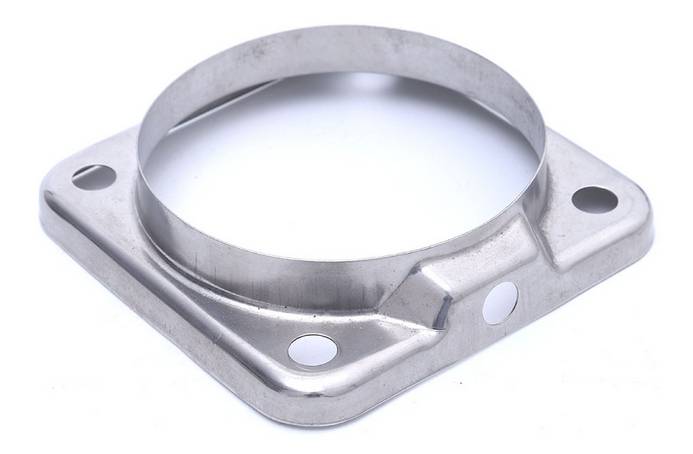
Tooling and Equipment: Ensuring Efficiency and Minimizing Wear
The quality and condition of your tooling and equipment are critical for achieving accurate and consistent results in aluminum stamping. Here’s a breakdown of key aspects to consider:
1. Die Design
- Clearances: Precise clearances between the punch and die are essential to control material flow and prevent excessive stress. Improper clearances can lead to cracking, tearing, or dimensional inconsistencies in the finished parts. Ensure clearances are optimized based on the chosen aluminum alloy, material thickness, and desired part geometry.
- Radii: Smooth, appropriate radii on die edges and corners are crucial to prevent material tearing and ensure smooth material flow during forming. Insufficient radii can cause stress concentrations and lead to tearing, especially with thinner aluminum sheets.
- Lubrication flow: Incorporate channels and grooves into the die design to facilitate efficient lubricant flow throughout the forming process. This minimizes friction between the material and the tooling, reducing wear and tear on both. Pay attention to areas with high pressure or complex geometries where lubrication is critical.
- Maintenance: Regularly inspect dies for wear, damage, and misalignment. Address any issues promptly to prevent part quality deterioration and potential safety hazards. Implement preventative maintenance practices like cleaning, lubrication, and adjustments to ensure optimal die performance and longevity.
2. Press Selection
- Tonnage capacity: Choose a press with sufficient tonnage capacity to deliver the forming force required for your specific part geometry and material thickness. Insufficient tonnage can lead to incomplete forming, wrinkles, or even press damage. Consult with a press manufacturer or qualified engineer to determine the appropriate tonnage based on your specific needs.
- Press speed: The press speed should be compatible with the material properties, part complexity, and desired production rate. High speeds can lead to excessive wear, wrinkling, or tearing, while slow speeds might compromise productivity. Find a balance between speed and quality for your specific application.
- Alignment and calibration: Ensure the press is properly aligned and calibrated to guarantee precise and consistent part dimensions. Regular alignment checks and calibration adjustments are crucial to maintain optimal press performance and avoid dimensional inconsistencies.
- Maintenance: Implement a comprehensive maintenance program for your press and associated equipment. This includes regular inspections, lubrication, and replacement of worn parts to prevent breakdowns and ensure reliable operation.
By carefully considering these factors and implementing proper maintenance practices, you can ensure your tooling and equipment function efficiently, minimizing wear and tear while delivering high-quality aluminum stampings consistently.
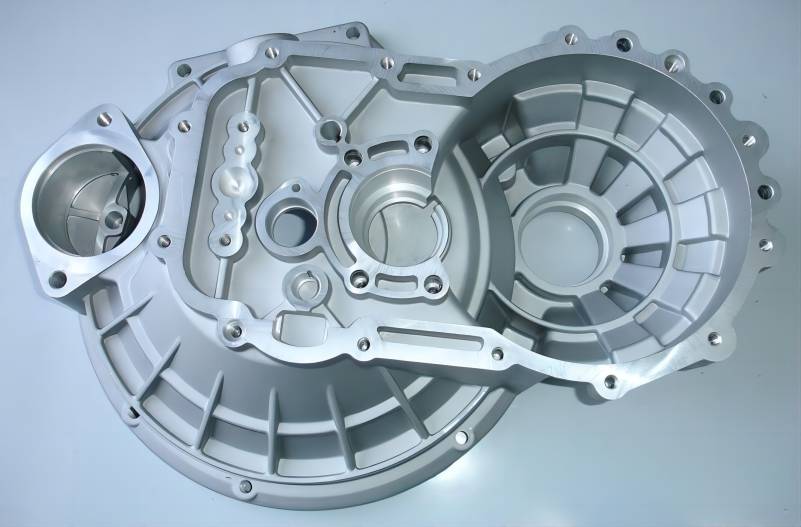
Process Parameters: Optimizing Lubrication, Blank Design, and Monitoring
Optimizing process parameters is crucial for achieving efficient, high-quality aluminum stampings. Here’s a detailed breakdown of key areas to focus on:
1. Lubrication
- Lubricant selection: Choose a lubricant with properties compatible with your specific aluminum alloy, tooling material, and operating conditions. Consider factors like viscosity, film strength, friction coefficient, and compatibility with the chosen lubricant application method. Consult lubricant manufacturers or technical experts for recommendations based on your specific needs.
- Lubricant application: Ensure consistent and effective application of the chosen lubricant to all relevant areas of the blank and tooling. This includes the punch, die surfaces, and areas of high contact pressure. Consider automated application systems for high-volume production to maintain consistent coverage and minimize waste.
- Monitoring and adjustment: Regularly monitor lubricant application and its effectiveness throughout the stamping process. Observe for signs of insufficient lubrication like increased friction, wear on tooling or part defects. Adjust application parameters based on observations and process data to maintain optimal lubrication and minimize wear.
2. Blank Design
- Blank size: Utilize the minimum blank size possible to minimize material waste and scrap. However, ensure the size is sufficient to accommodate the final part geometry after forming without excessive thinning or stretching. Consider using blank utilization software to optimize the blank size and minimize waste.
- Blank shape: Design the blank shape to facilitate smooth and efficient feeding into the die. The shape should prevent jamming, misalignment, or wrinkles during the forming process. Utilize feeders and guides if necessary, especially for complex shapes or tight tolerances. Consider using blank nesting software to optimize material utilization and minimize scrap.
3. Process Monitoring
- Critical parameters: Continuously monitor key parameters during stamping, such as stamping force, press stroke, and part dimensions. Implement control systems with alarms or automatic adjustments to identify and address deviations from desired values promptly. This helps maintain consistent part quality and prevent defects.
- Data analysis: Regularly analyze process data to identify trends, potential issues, and opportunities for improvement. Analyze factors like wear patterns, scrap rates, and production efficiency to identify areas for optimization. Utilize statistical process control techniques to monitor process stability and identify potential quality issues early.
By carefully optimizing these process parameters, you can ensure efficient lubricant usage, minimize material waste, and achieve consistent, high-quality aluminum stampings in your production process.
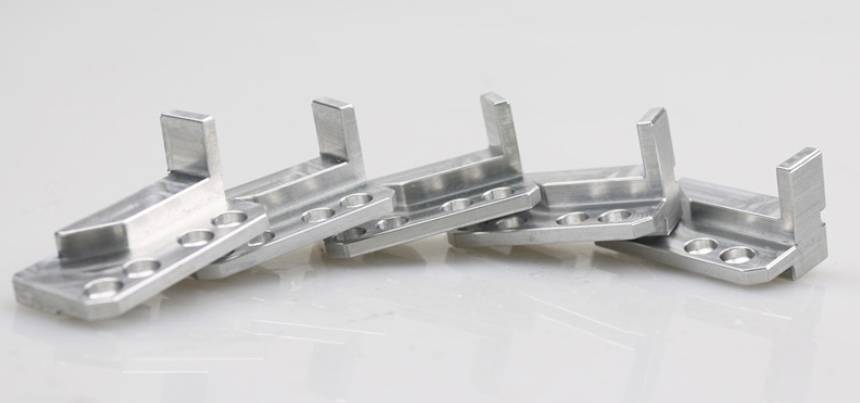
Safety Precautions: Protecting Yourself and Others
Aluminum stamping involves inherent risks, necessitating stringent safety measures:
- Personal protective equipment (PPE): Always wear safety glasses, gloves, and other PPE appropriate for the specific hazards involved, such as ear protection from loud presses and respiratory protection from potential airborne contaminants. Ensure PPE is in good condition, fits properly, and is used consistently.
- Machine guarding: Implement effective guarding on all moving parts of the press and tooling to prevent accidental contact. Regularly inspect and maintain guards for functionality.
- Safety interlocks and procedures: Utilize safety interlocks that halt the press operation if unsafe conditions are detected. Establish and enforce lockout/tagout procedures before performing maintenance on equipment.
- Training and awareness: Provide operators with comprehensive training on safe work practices and procedures for aluminum stamping. Regularly update and reinforce safety knowledge through refresher training and awareness campaigns.
Additional Considerations: Environmental Regulations and Quality Control
Beyond the core aspects of stamping, consider these vital elements:
1. Environmental Responsibility
- Lubricant selection: Choose biodegradable or environmentally friendly lubricants whenever possible. This minimizes potential environmental impact from lubricant disposal and emissions.
- Scrap metal recycling: Implement a comprehensive scrap metal recycling program to reduce waste and conserve resources. Partner with metal recycling companies or invest in shredding and sorting equipment for efficient scrap management.
- Air emissions control: Utilize proper ventilation and filtration systems to capture and minimize air emissions generated during the stamping process. This includes dust, fumes, and volatile organic compounds (VOCs) released from lubricants or the aluminum itself. Regularly maintain and upgrade ventilation systems to ensure optimal performance.
2. Quality Assurance
- Inspection procedures: Establish robust inspection procedures throughout the production process to ensure parts meet dimensional and quality specifications. This includes both in-process inspections and final inspections of finished parts.
- Measurement tools and techniques: Utilize appropriate measurement tools and techniques for various part features, such as calipers, micrometers,ゲージ blocks, and coordinate measuring machines (CMMs). Ensure these tools are properly calibrated and maintained for accurate measurements.
- Data analysis: Continuously monitor and analyze inspection data to identify trends, potential defects, and areas for improvement. Utilize statistical process control (SPC) techniques to statistically analyze variations and identify potential quality issues early in the process.
- Corrective action: Implement a system for corrective action when deviations from specifications are identified. This may involve adjusting process parameters, modifying tooling, or investigating root causes of defects to prevent recurrence.
3. Continuous Improvement
- Process data analysis: Regularly analyze process data, including lubricant usage, scrap rates, and production efficiency, to identify opportunities for improvement. Utilize tools like Six Sigma or Lean Manufacturing principles to optimize processes and minimize waste.
- Lubrication method refinement: Explore and experiment with different lubricant application methods, such as spray, brush, or roller application, to optimize effectiveness and minimize waste.
- Die design optimization: Collaborate with die makers to continuously improve die design for better material flow, reduced wear, and enhanced part quality.
- Collaboration and knowledge sharing: Foster collaboration between production personnel, engineers, and quality control teams to share knowledge, identify improvement opportunities, and implement best practices effectively.
By actively incorporating these additional considerations, you can demonstrate environmental responsibility, ensure high-quality aluminum stampings, and continuously improve your production processes for optimal performance and sustainability.

Conclusion
By adhering to these comprehensive precautions, you can navigate the aluminum stamping process with confidence, ensuring part quality, operator safety, environmental compliance, and sustainable practices. Remember that ongoing education, collaboration, and commitment to continuous improvement are essential for achieving excellence in aluminum stamping.

